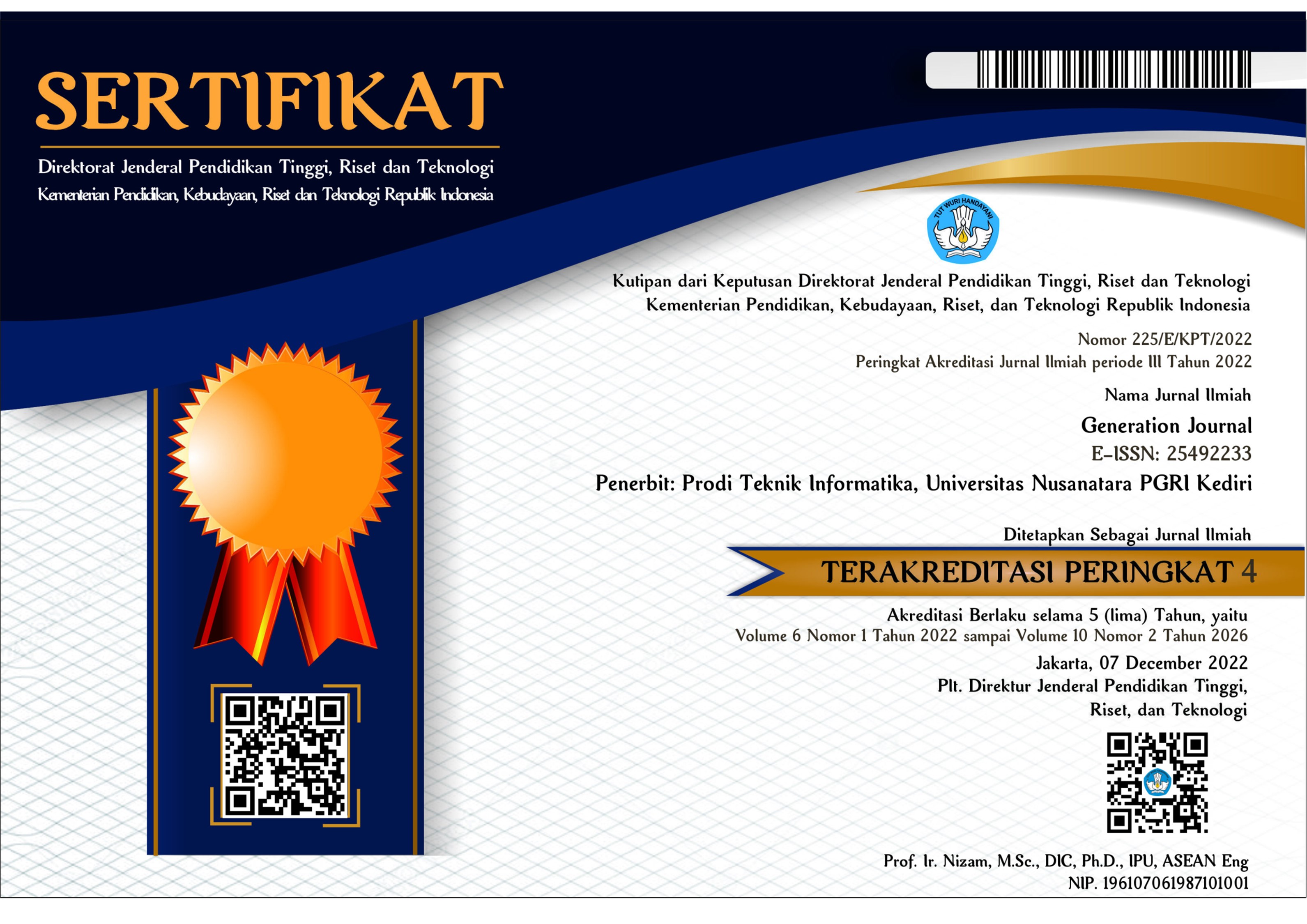Penerapan Logika Fuzzy pada Alat Pendeteksi Kualitas Telur Berbasis Mikrokontroler Arduino
DOI:
https://doi.org/10.29407/gj.v7i1.17239Keywords:
Arduino, Fuzzy, IoT, LDR, TelurAbstract
The process of selecting good eggs that are suitable for consumption is usually carried out using the candling method manually or by observing using a light or flashlight, then observing with the eyes. This method has weaknesses, because manual observations take a long time and the possibility of errors. it is necessary to make a tool that can efficiently detect eggs, using a Light Dependent Resistor (LDR) sensor and an Arduino. LDR Sensor is used to capture the intensity of light, which is emitted into the egg, then processed using Arduino basic for decision maker with fuzzy logic. This tool works with the results of the LDR sensor and displayed on the LCD and color LEDs. Based on the experimental results obtained that the accuracy of the tool is 95%
References
N Ramadhani, Herlina, Anjani Chintya Pratiwi,” Perbandingan kadar protein pada telur ayam dengan metode spektrofotometri sinar tampak,” Kartika: Jurnal Ilmiah Farmasi,Vol 6, No 2, pp 53-56, Des 2018.
N A Harahap,”Perancangan Prototype Jemuran Otomatis Menggunakan Sensor Air Dan Sensor Ldr Berbasis Mikrokontroler Arduino Uno Dengan Metode Flc,” Media Informatika Budidarma, Vol 2, No 1, Januari 2018.
M. Mujiono, Adimas Ketut Nalendra,Rafika Akhsani,Anang Widigdyo,” Rancang Bangun Aplikasi Presensi Mahasiswa Di Akademi Komunitas Negeri Putra Sang Fajar Blitar Menggunakan Framework Codeigniter,” Research : Journal of Computer, Information System, & TechnologyManagement, Vol. 3, No. 2, pp83-92, Oktober 2020.
Nalendra, A. K., & Mujiono, M. (2020). “PERANCANGAN IoT (INTERNET OF THINGS) PADA SISTEM IRIGASI TANAMAN CABAI.” Generation Journal, 4(2), 61-68. https://doi.org/10.29407/gj.v4i2.14187.
Nalendra, A. K., & Waspada, H. P. (2021). Penerapan Artificial Intelligence untuk Kontrol Suhu dan Kelembapan pada Kandang Broiler berbasis Internet of Things. Generation Journal, 5(2), 59-68. https://doi.org/10.29407/gj.v5i2.15706
Downloads
Published
Issue
Section
License
Authors who publish with this journal agree to the following terms:
- Copyright on any article is retained by the author(s).
- The author grants the journal, the right of first publication with the work simultaneously licensed under a Creative Commons Attribution License that allows others to share the work with an acknowledgment of the work’s authorship and initial publication in this journal.
- Authors are able to enter into separate, additional contractual arrangements for the non-exclusive distribution of the journal’s published version of the work (e.g., post it to an institutional repository or publish it in a book), with an acknowledgment of its initial publication in this journal.
- Authors are permitted and encouraged to post their work online (e.g., in institutional repositories or on their website) prior to and during the submission process, as it can lead to productive exchanges, as well as earlier and greater citation of published work.
- The article and any associated published material is distributed under the Creative Commons Attribution-ShareAlike 4.0 International License














